Games are a Language
Games are a language.
I used to say that my greatest interests in life were like Amazon: books and games. Of course, I can’t say that anymore, since Amazon’s currently sells everything and its interests are the establishment of a worldwide corporate dystopia. But some might find this combination of interests peculiar. Sure, books and games are both nerdy interests, but they’re at almost opposite poles of the nerdy sphere. Books are dense, quiet, contemplatory. Games are fast, frantic, fun. Why would my greatest interests be two things so different?
I could respond that by just saying that both books and games are wide enough that you can find books that are fast, frantic and fun, as well as games that are dense, quiet and contemplatory. Or I could point out that we all contain multitudes and sometimes our greatest interests are not intertwined - surely there are plenty of people who enjoy racing cars and fishing. But that doesn’t make for a good entry in my games-focused newsletter, so I have a third answer that I can develop on: the reason I like both games and books is that they are both languages.
This is something that is difficult to talk about, ironically. When I say that games are a language, I mean that systems can be understood at a simple cognitive level. Tutorials are essencially beginner phrases, the interactive equivalent of 'donde es la biblioteca' to teach players how the game works, what they must look for. At the highest levels, we have things like Tetris record-breakers who are able to quickly parse large screens full of information - if that's not fluency, what is? - or the kind of perspective you can see like in Liz Ryerson's analysis of Wolfenstein levels. This article is very interesting to me because, in the end, she remembers young Liz misunderstanding a trolly level feature as an indicator that the level is actually impossible. Not only is a game level enough of a language that it can convey great deals of information to the player (not only on a gameplay level, but on a high-concept emotional level) but it's actually complex enough to be misunderstood.
However, it's hard to make this idea obvious when it comes to digital games. Even Liz' article is quite dense, and there is no single game about which I possess anything resembling her expertise. Fortunately, there is something else, something simpler that I can talk about to show what I'm talking about. Yeah, let's talk about Magic: the Gathering again.
I'm not going to talk about how Magic is a bad card game and you shouldn't conclude from this article that you should play it - because I already did. However, Magic is kind of unique in which it's been continously published for thirty years, with new cards coming out every year, and its rules have remained roughly consistent for the better part of that time. And while most Magic fans like it for the tactical consistency, flavour is an important part of the game, and one that's somewhat easy to explain even to one mostly unfamiliar with the rules.
A good way to explain the point I'm trying to make is on Mark Rosewater's GDC talk (but don't worry, I'm only linking it for completeness - you don't need to watch an hour-long video to understand what I'm talking about). On the video, Rosewater talks about the Magic world (or 'plane', to use the lore's parlance) of Theros, somewhat loosely based on Ancient Greece, mixing up the mythology and the epics. He speaks about a card called Akroan Horse.
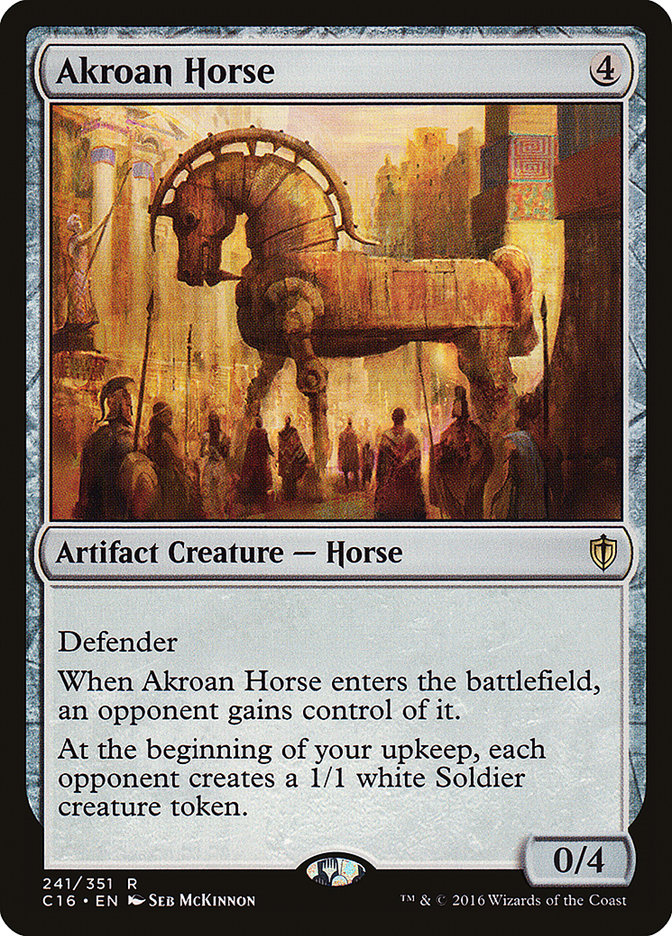
Akroa is the name of the Troy analogue in Theros. And I dare say that this is all the information one needs to understand what this card does, even if one does not play Magic.
Do you understand what it does? When it comes into play, it's on an opponent's side, not yours. And each of that player's opponents - which includes you - now creates a little soldier every turn. It's like you gave a gift to your opponent, but that gift was actually full of little soldiers!
The talk is interesting, because it goes into depth about the limitations of the 'game' language. Mark says that he tried to turn this card into the Akroan Lion. Partly so as to not imitate the Greek mythos so closely, and partly because lions in Magic are cats, and there's a lot more support for cats in Magic than horses. Problem is, people didn't get the Akroan Lion. They didn't get what it was referencing, and they actually stopping understanding what it did. They thought it came into play under your opponent's control, and then that opponent also got a bunch of tiny soldiers every turn. Who would want to play that? The card was changed back to the published version, and now people get it.
This shows that games are a language, but it's one that's difficult to be fluent in, and it depends quite a bit on cultural cache to understand. (Darmok and Jalad at Tanagra?) Still, as long as there is a large cultural cache to grab onto, it's easy enough to translate well-known mythoi into the dry, mathematical language of Magic. This card has very complex rules, but if I tell you it's Achilles, you kinda get it, don't you?
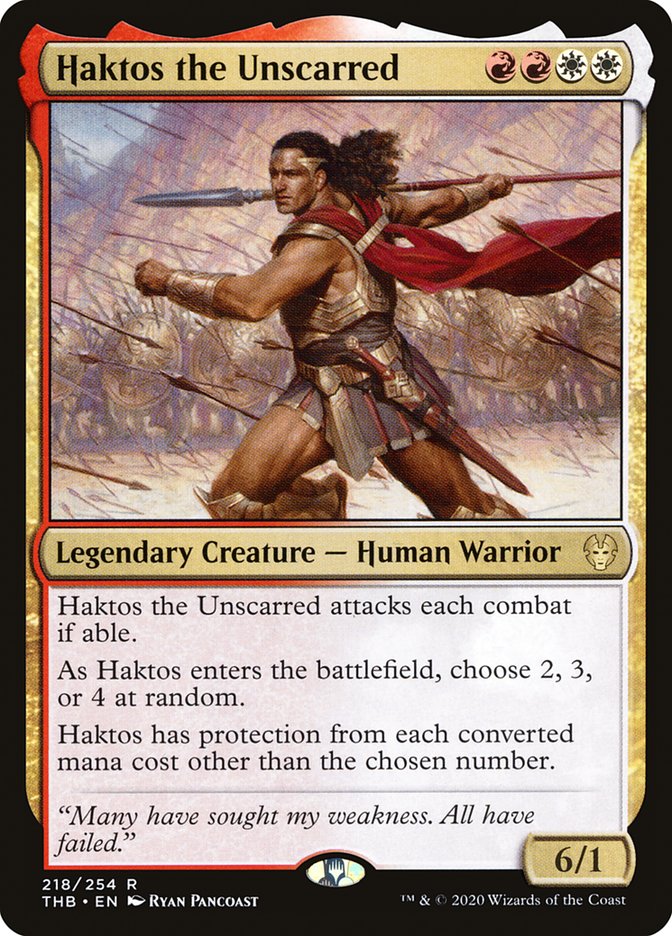
This stretches to any other area that is sufficiently well-known. Later, the story of Magic came the world of Eldraine, based on fairy tails and Arthurian mythos. These are not exactly Arthur and Merlin, but you can kind of get what they are going for.

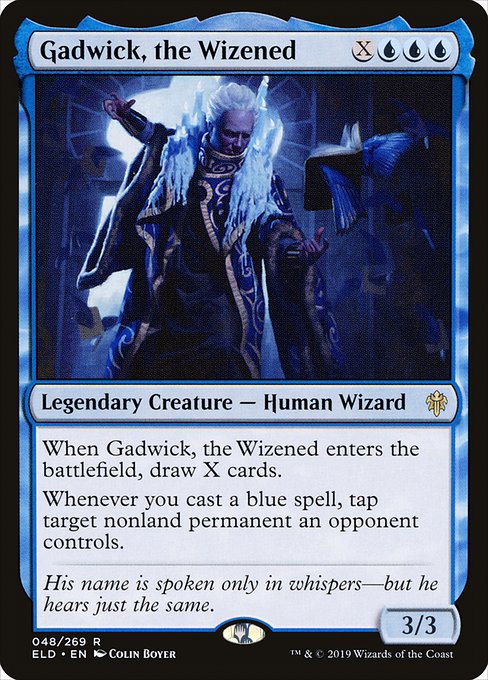
The fun thing is that, sometimes, if a thing has enough cultural significance, players can understand it on its own without even the need of setting up a 'place' to explain its significance. This creature was released on a core set, a special kind of set for which lore isn't written, so there's no story behind it; but I bet you all can understand who it's meant to be.
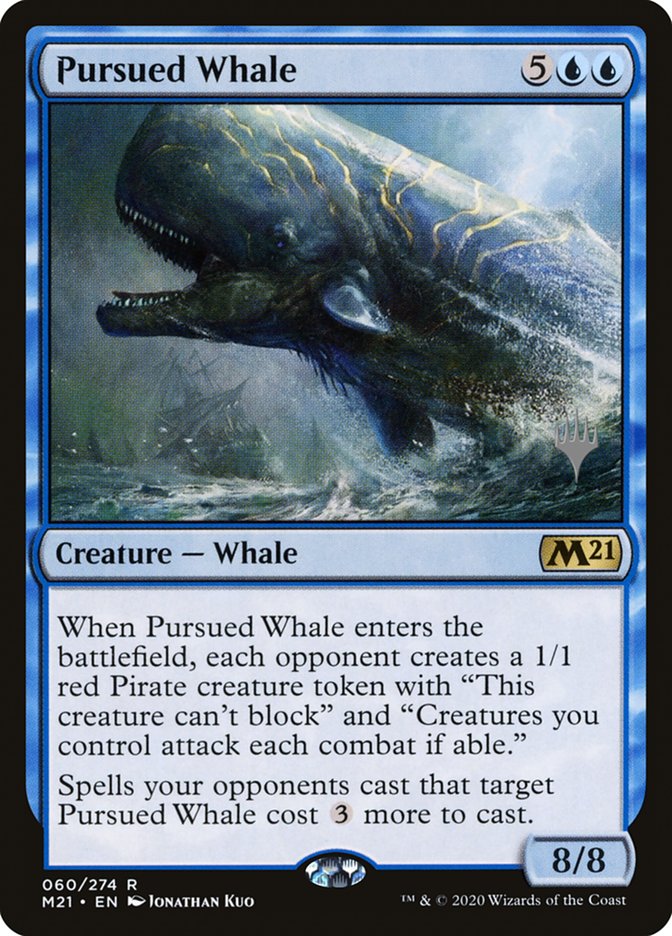
But no story about Magic would be complete without a tale of players complaining about Magic, and this is where I wanted to get to.
Recently, as part of the weird conceptual cashgrab that Hasbro have been doing with their IPs, they released a couple of Magic sets taking place in their other highly profitable product line. Dungeons and Dragons. Despite taking some dumps on Magic's lore, the sets have been more or less well received. But something that had players rub the wrong way since the beginning was an exaggeration of flavour text. Flavour text usually refers to something written in italics under the rules text, which tells us a bit more about the card's significance in the world. However, the D&D cards had a lot more text, usually prefacing an ability. Sometimes, it would mimic abilities that player characters and enemy creatures have in D&D:
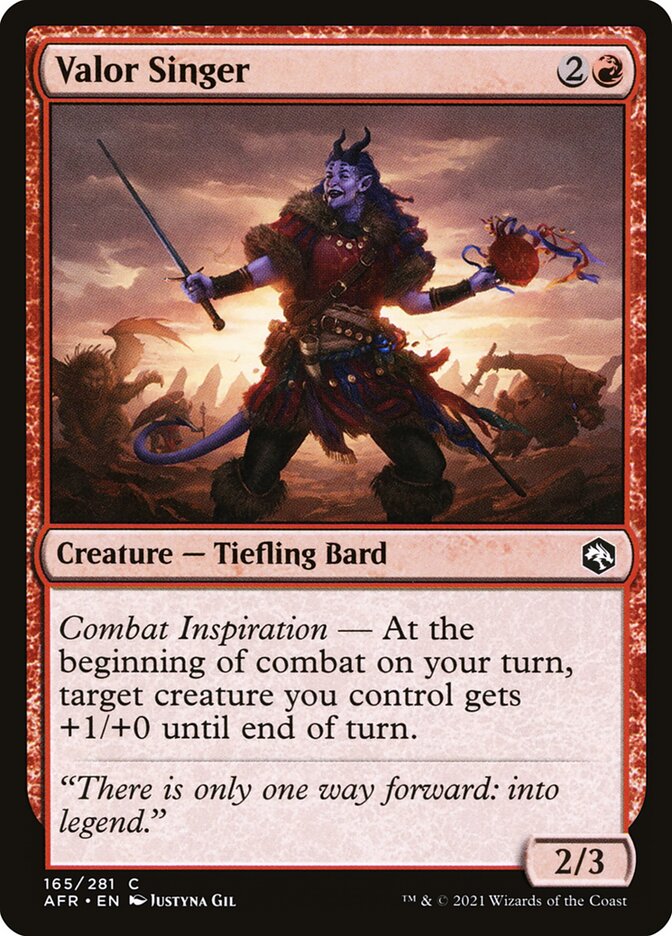
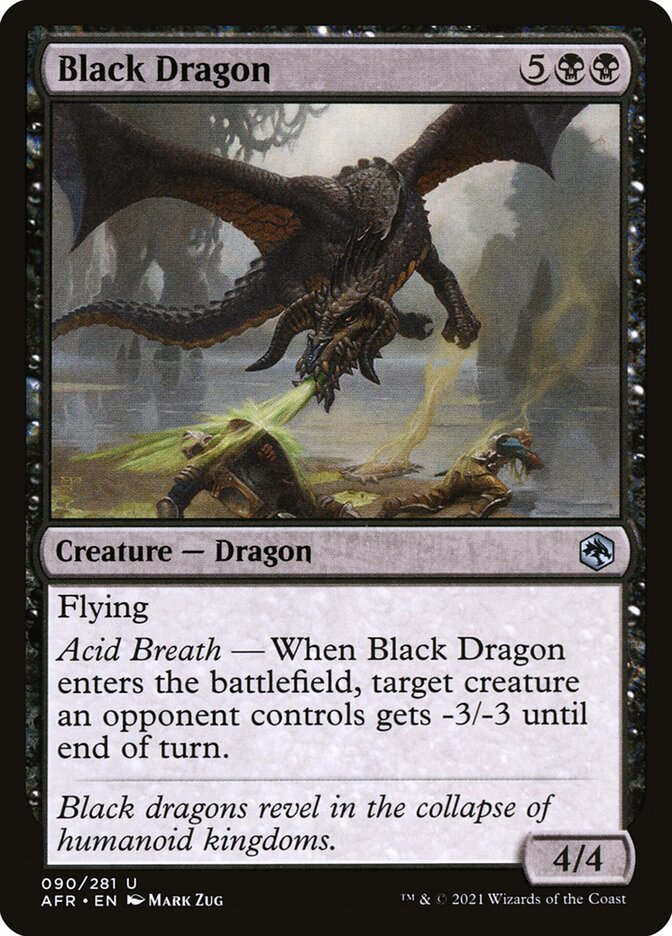
And sometimes, these would be a way to imitate the sort of dangers that would beset the player characters during a game session:

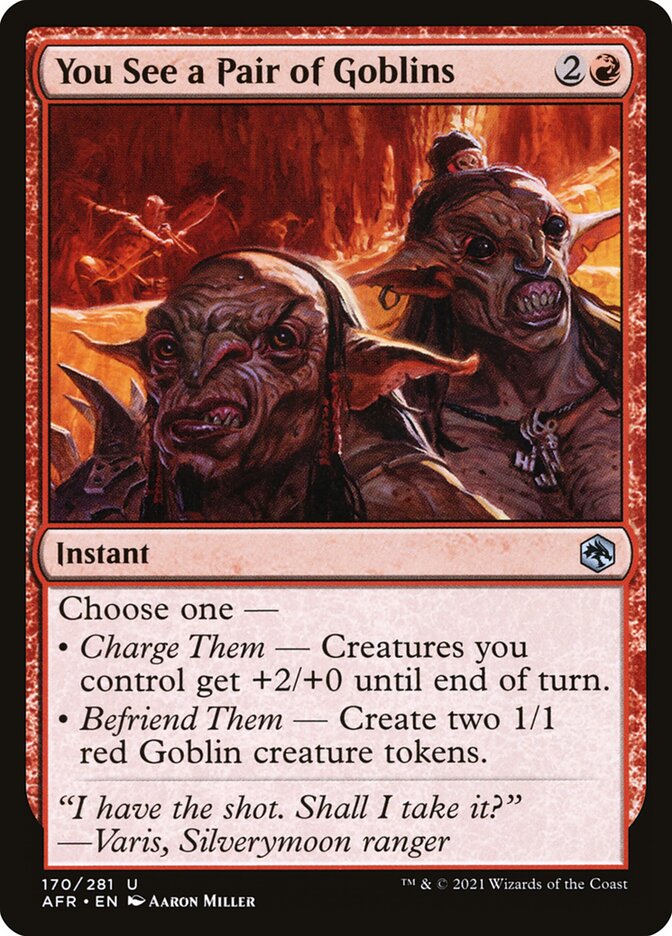
You may think these cards are harmless, and that the latter are like an actually fun way to reference the more freeform playstyle of tabletop RPG's into the more strict kind of play that Magic provides. If you do think that, know that I think the same. However, I also understand completely the frustration that players felt at these lines of text. Remember, enfranchised players are extremely fluent at speaking the language of Magic. They know it like few do - sometimes, even better than the designers. And this was putting training wheels in the language. Or worse: it was putting training wheels on a bicycle so poorly made that it could not possibly stand on its own.
Remember the idea for the Akroan Lion? Perhaps people would understand its concept better if the ability that put it under an opponent's control was labeled Akroan Gift, and the ability that created soldiers was labeled Infiltrated Units. Would this make the Akroan Lion acceptable? Would this be a good card? It would almost certainly work as well, and have a more relevant creature type. Is this better?
Now scroll back up to You See a Pair of Goblins. Would you be able to understand what the card does without the labels? Would you understand that the first option means charging the goblins?
Does the card really speak the language of the game, or only pretends to?
To finish this story, we need to talk about Feldon. Feldon was an important character from the early days of Magic. He was a poweful magician, but the most well-known fact about him is that he lost his life and searched all kinds of magic for a way to bring her back to life, ultimately failing. It's a cliché kind of fantasy story, but sometimes it's cool to see them in a story we're following (all clichés become clichés for a reason, after all). Despite its relevance, Feldon never got a card during his storyline, which let Wizards do one much later, following modern design practices. His card came out in 2014:
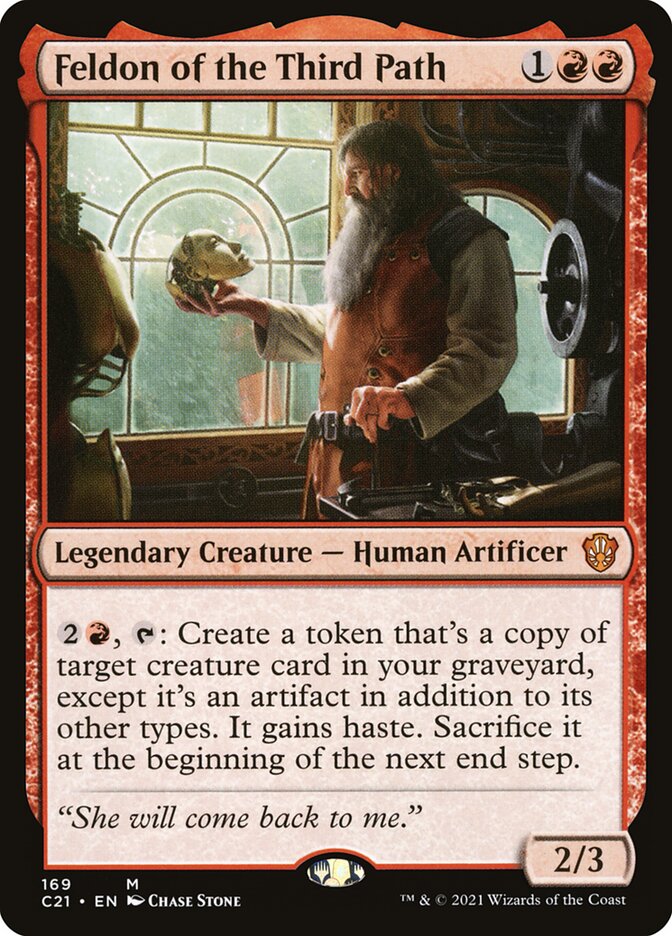
During the previews fot the first D&D set, when the "flavour words" were being announced, someone on Reddit made a satirical version of the card:
There are many kinds of language. What's important is being understood.
January Link Roundup
No Phosphine on Venus, According to SOFIA
While most of our sci-fi dreams of offworld colonization are centered on Mars, I've always felt we should look inward instead - towards the sun, where Venus lies, where the closest enviornments to Earth outside of Earth itself can be found. Sadly, though, we'll need to brave the Morning Star alone, as a lack of phosphene indicates a low probability of lil' Venusians traipsing around the atmosphere.
How to buy a social network, with Tumblr CEO Matt Mullenweg
Speaking of space colonization and failure... As Elon continues to fuck around on Twitter and find out things have stopped working, it's interesting to look back on Tumblr - the social network that died and (instead of going to Superhell) came back. Most people don't know it, but since I made the swap from Twitter to tumblr I've been much happier. An interview with its CEO - who basically bought the site at cost - might be interesting.
Urban Landscapes Merge with Intricately Rendered Figures in Ed Fairburn’s Portraits on Vintage Maps
Do you like maps? Do you like portraits? If you answered 'yes' to at least one of those questions, you'll likely enjoy Ed Fairburn's work.
This month's video is about how magnetic braking looks like magic - to the point that you can make things float.